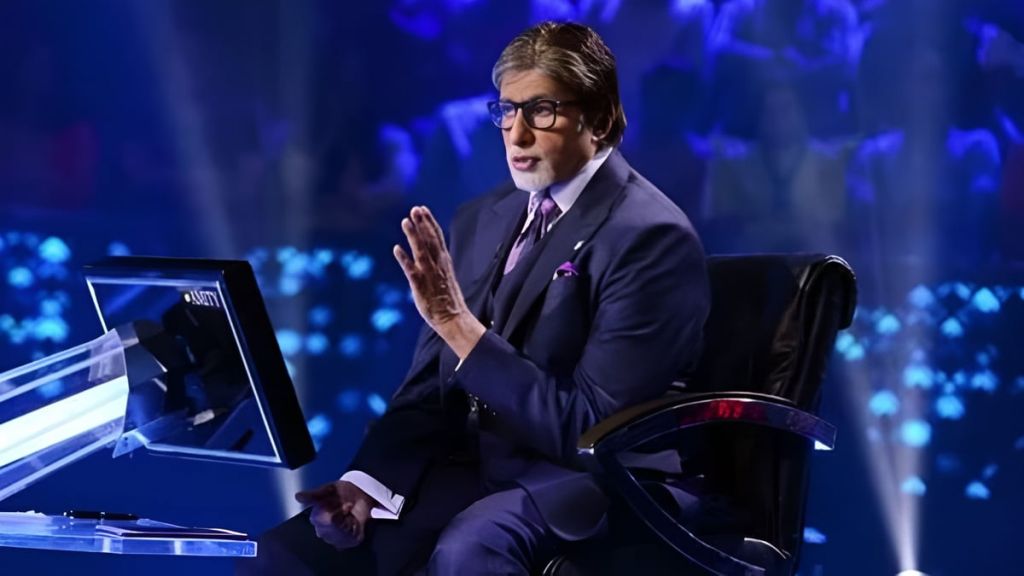
Within one week of this millennium, the face of Indian television changed beyond recognition. Nobody—not even the enterprising, far-sighted Star Plus boss Sameer Nair, who surreptitiously initiated moves to import Who Wants To Be A Millionaire into this country—could have guessed what was in store for and on Indian television in and from July 2000 onwards.
The other channels were left looking like honorary denizens of the idiot box (with the stress on “idiot”). From being a distant third, Star Plus simply swept past the competition to emerge way ahead of Zee and Sony Entertainment, who didn’t know what hit them until it was too late.
Who would have thought that Kaun Banega Crorepati would change us into a nation of knowledge-thirsty gamblers? Now, children in their free time no longer play—or watch—Antakshari. They play Kaun Banega Crorepati, and everyone wants to be Amitabh Bachchan. An unprecedented GK wave took over the country. Kids were on the prowl with questions like: What was Kunti’s real name in the Mahabharat? Is there life on the battlefield of Kurukshetra beyond Mahesh Manjrekar?
Ah, there went our favourite soaps! Kids flicked the switch to Star Plus promptly at 9:00 p.m. Many cities rescheduled their night shows to 10:30 p.m. after registering steep drops in the 9:00 p.m. collections of cinema shows.
Then came the counter-attack. Through what else? A game show! Sawaal Dus Crore became a sawaal sau crore ka in no time at all. Within a few weeks, the show to countermand the Crorepati competition had flopped. You cannot fight Dilip Kumar with his clone Mukesh Khanna. The sets, attitude, and even the lingo from KBC had been transposed to Sawaal Dus Crore Ka. Rumours in Mumbai insisted Manisha Koirala dumped Malayalam director Upendra, who was waiting on the sets with his cast, crew, and leading man, to co-host Sawaal Dus Crore Ka. When you’re getting 5 crores for smiling vacuously in a game show, why should you strain yourself over 75 lakhs? Zee tried hard to get Shabana Azmi to host their Sawaal. But she had other plans in 2000.
Laughs Sameer Nair, “Before the year 2000, Star Plus had an elitist image. After we did a hi-tech game show called KBC, the home-viewing medium was turned upside down.” Star Plus also had unexpected success with the two post-Crorepati daily soaps Kahani Ghar Ghar Ki and Kyunki… Saas Bhi Kabhi Bahu Thi, both produced by the phenomenally successful mother-daughter pair of Shobha and Ektaa Kapoor. Both the gharelu home-viewing versions of Sooraj Barjatya’s cinema piggybacked to success on KBC. After KBC, viewers simply kept watching the two new daily-cacies on Star Plus, forcing Zee to invent their own version of that Kahani thing called Babul Ki Duwayen Leti Jaa, written by television maverick Vipul Shah. Needless to say, no one’s duwayen saved the wannabes.
Worst hit by the Crorepati cyclone was 1999’s flavour of the year Movers & Shakers. Suddenly, Shekhar Suman was no longer that funny. Quality-consciousness had crept into primetime. The year 2000 was decisive for national television as well. Finally overthrowing the lingering lethargy from their monopolistic days, Doordarshan’s Metro channel finally woke up to the rapidly expanding competition to introduce the 9-Gold primetime band, which went berserk with soaps and sitcoms featuring the crème de la crème of television.
That all of this happened to Indian television in the first year of the new century can’t be a coincidence. The Satellite gods must be watching. They must have decided enough was enough. Kaun Banega Crorepati was born. Or was that Amitabh Bachchan being born again?